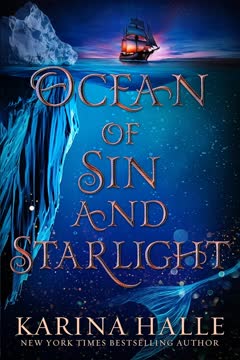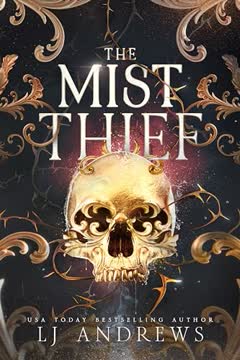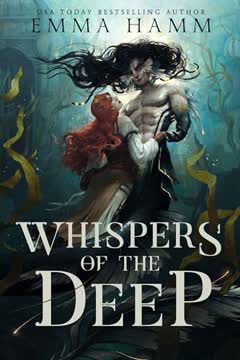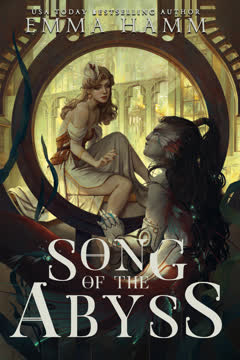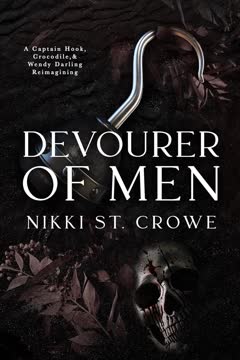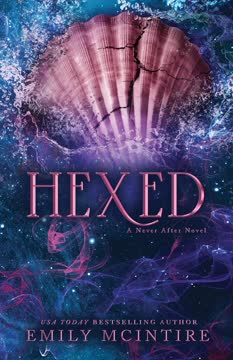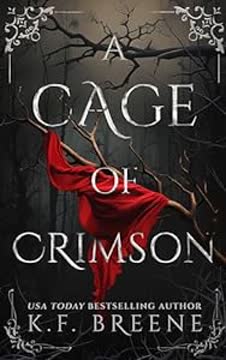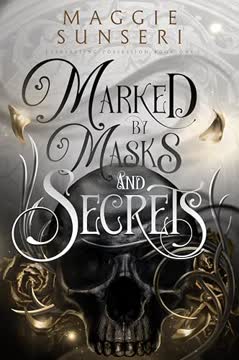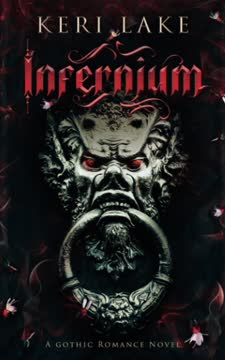Plot Summary
Chains and Redemption
In a field of yellow flowers, a tormented creature is found chained to a tree, feared by villagers for his violence. The doctor, Abraham, sees not just a beast but a man who might be redeemed. He offers the creature a choice: to work for his soul's return. This moment sets the tone for a story of monstrous hunger and the possibility of salvation. The doctor's compassion and curiosity about the nature of evil and redemption are clear, as is the creature's struggle between his bestial instincts and the faint glimmer of humanity. The world is dangerous for both, and the doctor's faith in the possibility of change is the only light in the darkness.
Blood and Salvation
Centuries later, the creature—now Father Aragon, a priest and blood-drinker—lives in exile at the world's edge. Abraham, his only friend and moral compass, departs, leaving Aragon to struggle with his monstrous appetite and the burden of his priestly vows. The threat of running out of blood and the fear of losing control loom large. The arrival of rumors about Syrens—mythical sea creatures whose blood can sustain Vampyres—offers both hope and temptation. Aragon's faith is a fragile shield against his nature, and his isolation is a crucible for his darkest desires.
The Syren's Scream
When fishermen are slaughtered by a Syren, Aragon is forced to confront the reality of monsters beyond himself. The survivors' tales are dismissed by the authorities, but Aragon knows the truth. The Syren's blood could be his salvation, but capturing her means crossing a line. His hunger and lust are inflamed by the thought of her, and he is drawn to the sea, torn between the urge to save his soul and the temptation to embrace his monstrous side.
Captive and Captor
Aragon captures the wounded Syren, Larimar, and brings her to his church, crucifying her to extract her blood. The act is both sacrificial and sadistic, a twisted echo of his own suffering. Larimar's pain and defiance ignite a battle of wills. She is both victim and threat, her otherness a mirror to Aragon's own. Their interactions are charged with violence, desire, and the possibility of understanding. The power dynamic shifts as Larimar reveals her intelligence and spirit, refusing to be broken.
Bargains in Darkness
Larimar bargains for her freedom, offering Aragon the chance to use his magic to give her legs in exchange for her blood and servitude. The ritual is painful and binding, a contract of body and soul. Aragon's control is tested as desire and guilt war within him. Larimar's transformation is both liberation and new captivity, as she becomes human but remains his prisoner. The lines between captor and captive, monster and victim, blur as their fates entwine.
Temptation and Defiance
As Larimar learns to navigate her new body, she tests the limits of Aragon's control, using seduction and defiance to assert her agency. Their encounters are fraught with tension, each seeking to dominate or escape the other. Aragon's vows and self-loathing clash with his longing for Larimar, while she plots her own freedom. The church becomes a battleground for their wills, and the threat of exposure and violence hangs over them both.
The Monster Within
Aragon's struggle with his monstrous nature intensifies as he confesses his past sins and the loss of his family. The arrival of a suspicious soldier threatens to expose his secret, and the pressure mounts. Larimar's own trauma and resilience come to the fore as she witnesses Aragon's internal war. When violence erupts, the beast within Aragon is unleashed, and the consequences are devastating for both.
Transformation and Betrayal
Larimar seizes an opportunity to escape, using her Syren powers to fight back against Aragon. Their confrontation is brutal and raw, exposing the depths of their pain and the impossibility of trust. The church burns, the village is destroyed, and both are left adrift—Larimar in the sea, Aragon in madness. The cycle of captivity and betrayal is complete, and the hope of redemption seems lost.
Obsession and Suffering
Years pass. Aragon, broken and haunted by his obsession with Larimar, is found and rehabilitated by Abraham. Together, they join a crew of Vampyre pirates, the Brethren of the Blood, in search of Syrens. The journey is one of penance and hope, as Aragon clings to the possibility of finding Larimar again. The sea is both prison and promise, and the line between salvation and damnation grows ever thinner.
Sisters and Storms
Larimar, now part of a Syren colony, is betrayed and captured by humans. Her sister Maren, herself transformed by magic, leads a daring rescue with the help of a sentient shark and the pirate crew. The reunion is bittersweet, as old wounds and new dangers converge. The storm at sea mirrors the turmoil within, and the promise of freedom is shadowed by the cost of survival.
Pirate's Judgment
Aragon and Abraham are tested by the pirate crew, forced to prove their worth in a trial by shark. The ship is a microcosm of their world—dangerous, lawless, and bound by strange codes. Maren's own history as a Syren and her connection to Larimar complicate loyalties. The past cannot be escaped, and the future is uncertain as old enemies and new threats close in.
Reunion and Reckoning
Larimar and Aragon are reunited, their shared history a wound that refuses to heal. The truth of their love and betrayal is laid bare, and both must choose whether to forgive or destroy each other. The pirate crew becomes the stage for their reckoning, as bargains are struck and the price of immortality is debated. The possibility of a new beginning is tempered by the weight of the past.
Vengeance Unleashed
The pirate crew and the transformed lovers launch a brutal assault on the ship that enslaved Larimar and her kin. Aragon embraces his beast, wielding his monstrous power in service of vengeance. Larimar claims her own retribution, feasting on the hearts of her enemies. The violence is cathartic and horrifying, a testament to the darkness they both carry. In the aftermath, the question of what it means to be a monster or a savior remains unresolved.
Immortality's Price
Larimar and Maren, seeking to remain with their beloveds forever, choose to become Vampyres. The process is fraught with danger and uncertainty, as the line between salvation and damnation is crossed once more. The experiment succeeds, but the cost is high. Immortality is both gift and curse, and the promise of eternity is shadowed by the fear of losing oneself to the darkness.
Peace with the Beast
Aragon confronts his beast, seeking not to destroy it but to make peace. The lesson is that darkness is part of all souls, and only by accepting it can one hope to control it. The struggle for balance is ongoing, and the threat of losing oneself remains. But with Larimar by his side, Aragon finds hope in the possibility of living with both light and shadow.
Love Beyond Damnation
In the aftermath of blood and fire, Larimar and Aragon find peace in each other's arms. Their love is forged in suffering and survival, transcending the boundaries of mortality and monstrosity. Together, they face the future—uncertain, dangerous, but filled with the promise of eternity. The story ends not with perfect redemption, but with the acceptance of imperfection, the embrace of both sin and starlight.
Characters
Father Aragon (Priest)
Once a human witch, Aragon was turned into a Vampyre by violence and loss, becoming a beast driven by hunger and rage. His journey is one of agonizing self-control, as he clings to faith and ritual to suppress his monstrous instincts. The trauma of losing his family and the guilt of his actions haunt him, fueling both his self-loathing and his desperate need for salvation. His relationship with Larimar is fraught with obsession, violence, and longing—a mirror of his internal war. Aragon's arc is a struggle to accept his darkness without being consumed by it, and to find love and peace in a world that offers little of either.
Larimar
Born a sea creature, Larimar is fierce, cunning, and unbreakable. Her capture and torture at Aragon's hands awaken both her vulnerability and her will to resist. She is driven by the loss of her family and the hope of finding her sister, Maren. Her transformation into a human, and later a Vampyre, is both a liberation and a new captivity. Larimar's psychological complexity lies in her ability to endure suffering without losing her sense of self, and in her willingness to embrace both love and vengeance. Her relationship with Aragon is a crucible for her own darkness and desire for freedom.
Abraham (Abe)
Born a blood-drinker, Abraham is both scientist and healer, fascinated by the nature of monstrosity and redemption. He serves as Aragon's mentor, friend, and conscience, guiding him through the labyrinth of his own soul. Abe's detachment and rationality are a shield against the chaos of the world, but his loyalty and empathy are unwavering. He is the voice of reason and hope, always seeking a path to salvation, even when it seems impossible.
Maren
Maren, Larimar's sister, is a Syren who traded her tail for legs and became entangled in the human world. Her journey is one of loss, transformation, and resilience. She is both a victim and a leader, using her magic and cunning to protect those she loves. Maren's relationship with Larimar is a source of strength and pain, as both struggle to reconcile their pasts with their new identities. Her marriage to Ramsay, the pirate captain, is a testament to her ability to find love and belonging in unexpected places.
Ramsay "Bones" Battista
Ramsay is a Vampyre pirate, both ruthless and charismatic, who commands the Nightwind and its crew of misfits. His pragmatism and loyalty are matched by his willingness to embrace the monstrous side of himself and his crew. Ramsay's relationship with Maren is a rare source of tenderness, and his willingness to risk everything for love mirrors the central themes of the story. He is both a father figure and a dangerous adversary, embodying the lawless freedom of the sea.
Thane
Thane is Ramsay's brother and the ship's quartermaster, marked by the loss of his wife and a deep well of sorrow. His stoicism and strength make him a pillar of the crew, but his pain is never far from the surface. Thane's interactions with Aragon reveal a shared understanding of grief and the struggle to find meaning in a world of violence and loss.
Ullan
Ullan is a Syren who betrays his own kind, driven by jealousy and a lust for power. His actions set in motion the capture and suffering of Larimar and her kin. Ullan's fate is a cautionary tale about the corrosive effects of hatred and the inevitability of retribution.
Nill
Nill is more than an animal; he is a protector and guide, capable of communication and empathy. His presence bridges the worlds of sea and land, monster and human. Nill's loyalty to Maren and Larimar is unwavering, and his role in their rescue is both practical and symbolic.
Sedge
Sedge is the human cook aboard the Nightwind, a figure of quiet competence and adaptability. His ability to communicate through sign language and his acceptance by the Vampyre crew highlight the possibility of coexistence and understanding across boundaries.
The Beast (Aragon's Monster)
The beast within Aragon is both a literal and metaphorical force, representing the darkness that all characters must confront. It is a source of terror and power, capable of both destruction and protection. The beast's relationship with Aragon is a psychological battleground, and its eventual acceptance is key to the story's resolution.
Plot Devices
Duality of Monster and Man
The narrative is structured around the tension between the characters' monstrous natures and their longing for redemption and love. This duality is embodied in Aragon's internal battle with his beast, Larimar's transformation from Syren to human to Vampyre, and the shifting power dynamics between captor and captive. The story uses alternating perspectives and internal monologues to explore the psychological complexity of its characters, blurring the lines between victim and villain, savior and destroyer.
Blood as Sustenance and Symbol
Blood is both literal sustenance for the Vampyres and a symbol of intimacy, violence, and transformation. The act of feeding is charged with eroticism and danger, binding characters together in relationships of dependence and desire. The extraction and sharing of blood serve as rituals of both domination and vulnerability, echoing religious and mythological themes.
Transformation and Bargain
The story is driven by acts of transformation—physical, emotional, and spiritual. Bargains with magic, whether for legs, immortality, or love, always come with a price. The consequences of these bargains are explored through pain, betrayal, and the struggle for agency. The narrative uses foreshadowing and callbacks to earlier deals, emphasizing the cyclical nature of suffering and the impossibility of escaping one's past.
Foreshadowing and Repetition
The narrative structure employs repetition of key motifs—chains, crosses, blood, storms—to create a sense of inevitability and fate. Foreshadowing is used to build tension, as characters' fears and desires are mirrored in the world around them. The story's emotional arc is shaped by the interplay of hope and despair, with moments of peace always shadowed by the threat of violence.
Found Family and Chosen Bonds
The pirate crew, the sisterhood of Syrens, and the relationships between captor and captive all serve as explorations of found family. The story interrogates what it means to belong, to be accepted, and to choose one's own fate. The bonds formed in adversity are both a source of strength and a reminder of the fragility of trust.
Analysis
Ocean of Sin and Starlight is a dark, lush exploration of the boundaries between monstrosity and humanity, love and violence, captivity and freedom. At its core, the novel interrogates the nature of redemption: can those who have committed terrible acts ever be forgiven, and can they forgive themselves? Through the entwined journeys of Aragon and Larimar, the story delves into the psychological scars of trauma, the seductive pull of power, and the cost of transformation. The narrative refuses easy answers, instead embracing the complexity of desire, guilt, and the longing for connection. The use of blood as both literal and symbolic sustenance underscores the intimacy and danger of relationships built on need and vulnerability. The novel's willingness to confront taboo subjects—pain, coercion, the eroticism of violence—challenges readers to question their own boundaries and sympathies. Ultimately, the story suggests that salvation is not found in purity or denial, but in the acceptance of one's darkness and the courage to love despite it. The lesson is that true freedom comes not from escaping one's nature, but from making peace with it—and that even in a world of sin and starlight, love can be both damnation and deliverance.
Last updated:
Review Summary
Ocean of Sin and Starlight received mixed reviews, with an average rating of 3.79 out of 5. Many readers enjoyed the dark fantasy romance elements, including vampires, sirens, and pirates. The book was praised for its spicy scenes, complex characters, and gothic atmosphere. Some found it captivating and well-written, while others felt it lacked plot development and rushed certain aspects. Readers appreciated the connection to the previous book, A Ship of Bones and Teeth, but had varying opinions on which was better. Content warnings were emphasized for sensitive readers.
